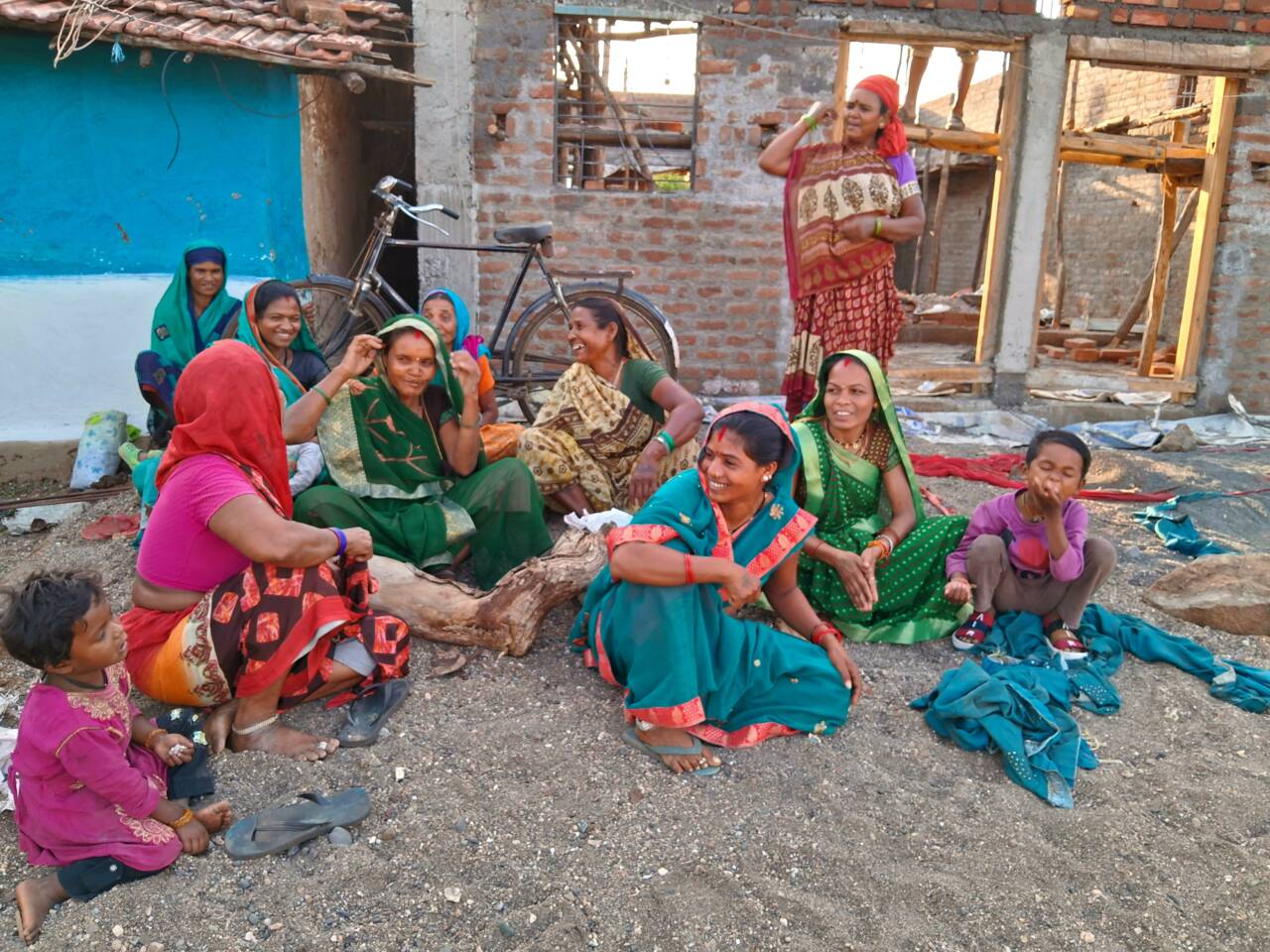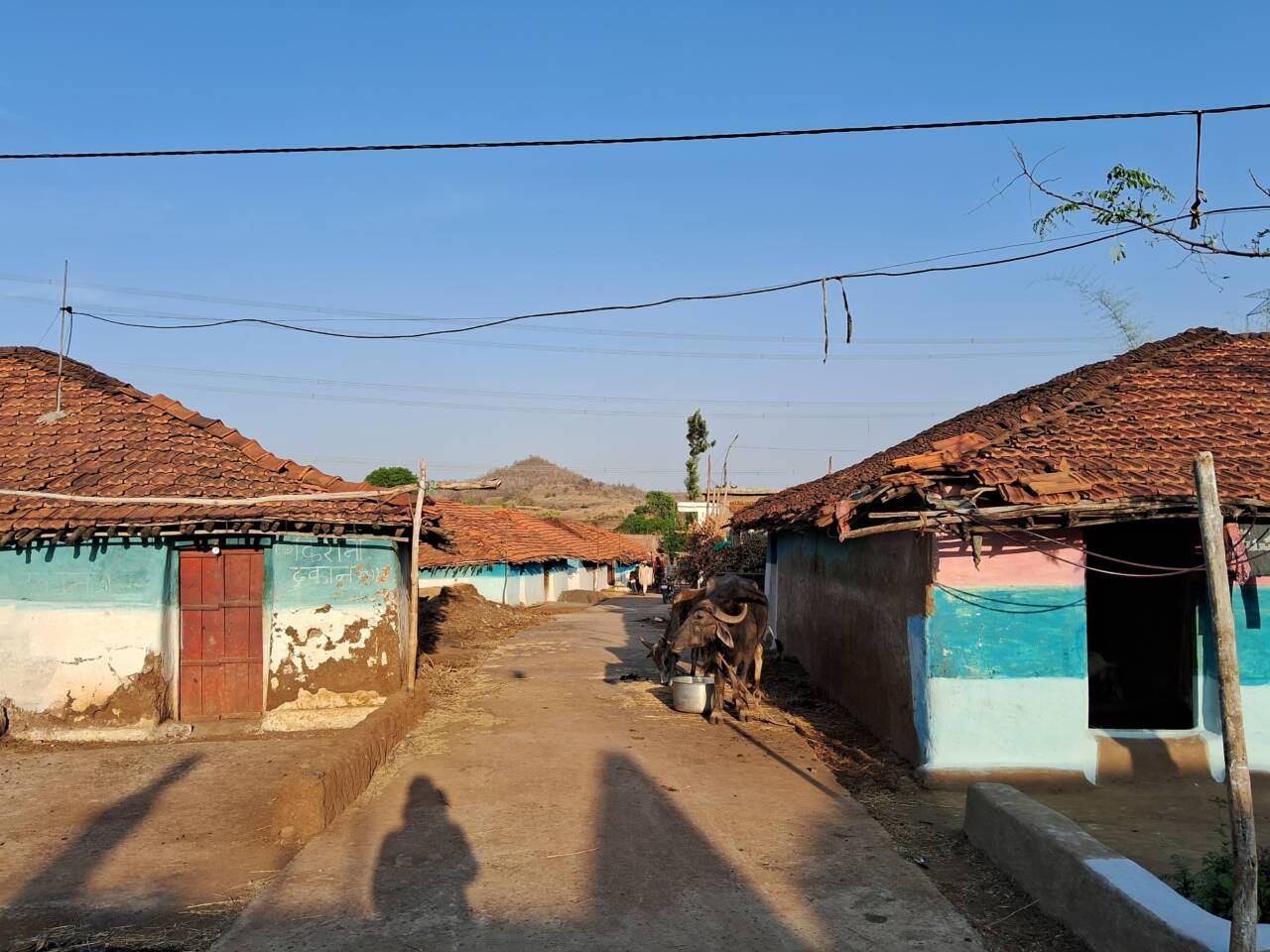On April 19, the first phase of voting for the 2024 Lok Sabha Elections came to a close, marking a significant milestone in India’s democratic process. Amidst the electoral fervour, the Organiser went into the heart of the action, covering the intriguing battleground of Madhya Pradesh’s Chhindwara—a stronghold of Kamal Nath.
Within the so-called bastion of Kamal Nath lies a village that defies conventional political affiliations, where every household casts its vote in favour of Modi. Remarkably, this village is predominantly inhabited by members of the Bhariya janjati—a Particularly Vulnerable Tribal Group (PVTG), comprising 99 per cent of the population.
Tribes are usually perceived as stalwart supporters of the Congress party; however, the tribes living in this village emerged as staunch BJP supporters, drawn by the tangible benefits of government schemes and becoming a “Labharthi“. Notably, initiatives such as the PM Awas Yojna and Madhya Pradesh’s Ahar Anudan Yojna have played a pivotal role in this transformation, extending financial assistance of Rs. 1000 to individuals hailing from the Bhariya, Sahariya, and Baiga tribes.
Housing For All: A Dream Come True
This report encapsulates the findings from our on-site visit, where we had the opportunity to interact with beneficiaries of the Pradhan Mantri Awas Yojana – Gramin (PMAY-G). Located within the Nandodi panchayat of the Amarwara region, the village of Kubdi boasts a community of over 100 households, with an impressive 80-plus house constructed under the auspices of the PM Awas Yojna.
Reflecting on his vision for inclusive housing, Prime Minister Modi, during a rally in Lucknow, Uttar Pradesh, in 2018, articulated his commitment to ensuring housing for all by 2022. Emphasising the transformative potential of the initiative, he underscored that the allocation of houses is not merely a welfare measure but a catalyst for women’s empowerment. This is evident in the policy of registering houses under the name of a woman member of the family or jointly, thereby promoting gender equality and empowerment through homeownership.
In India, the monumental endeavour of housing construction has seen the realisation of over two crore homes, with an exact count of 2,60,17,998. Delving into the specifics of the Amarwara region in Chhindwara, Madhya Pradesh, a staggering total of 64,426 houses have been sanctioned and successfully completed. Notably, a significant proportion of these dwellings, constituting 60 per cent, or 5,724 in numerical terms, have been allocated to members of the SC-ST community, underscoring the commitment to inclusive development and social equity.
The Ground Visit
Embark on a 30-kilometer journey towards Narsinghpur from Chhindwara, and you will find yourself at Singodi village. Just a stone’s throw away, approximately ten kilometres further, lies the Nandodi panchayat, within which nestles the quaint village of “Kubdi”. The path leading to this village resembles a highway, flanked by verdant fields and towering trees on either side, painting a picturesque scene. In a span of a mere one and a half to two kilometres, the village emerges, its transformation evident from afar.
The landscape of Kubdi has undergone a remarkable metamorphosis, evident even from a distance. Rows upon rows of houses stand shoulder to shoulder, a testament to the vibrant life pulsating within. Upon arrival, one is greeted by a cluster of four to five lanes, adorned with a small middle school, an Anganwadi centre, and various government offices, nestled along the front row. Opposite these establishments lies a bustling basti, adorned with over a hundred houses.




Upon my arrival, around 4 in the evening, the scene unfolded before me—a tableau of daily life unfolding. Women diligently washed utensils, men engaged in spirited discussions about the upcoming elections, while others toiled away, constructing their homes. As I stepped out of the vehicle, my driver informed the villagers that didi had arrived from Delhi just to witness the remarkable progress of their village.
Before long, a spirited young man in his twenties joined me, his enthusiasm palpable as he eagerly shared insights into the village’s development while we strolled past several houses.
Throughout the village, households currently possess two homes—a solid pucca structure alongside a makeshift kuccha dwelling. Notably, the completion of the pucca house’s terrace awaits the next instalment of funds from PM Awas Yojna, a matter keenly awaited by the villagers.
Beneficiaries Shower Unconditional Support to PM Modi
As I continued forward, capturing moments through my lens, my attention was drawn to a modest shanty nestled beside a more substantial structure. Stepping closer, I engaged in conversation with its residents, a man who introduced himself as Mankar Bharti from the Bhariya Janjati community. Given my presence to cover the elections, the inevitable inquiry arose: “Who will you be voting for?” Without hesitation, Mankar responded with a smile, “We will vote for the flower,” a colloquial reference to the lotus symbol of the BJP.
Curious, I probed further, “As the government built your house that’s why?” To which Mankar clarified that their allegiance to the BJP predates the housing initiative. He emphasised his unwavering trust in Prime Minister Modi’s governance, citing regular engagement with the PM’s televised addresses as a source of inspiration. Joining the conversation, Mankar’s wife echoed similar sentiments, expressing anticipation for Modi’s return, buoyed by her own participation in the ‘Ladli Behna’ scheme.
Sati and Kumbhkaran Bharti reside opposite Mankar’s house. Sati informed me that they have lived in the village for the past 40-45 years, and it’s under the PM Modi’s Government that they transitioned from a kuccha to a pucca house.


Upon inquiry, Sati confirmed that the house being constructed behind her was indeed built under PM Awas. She mentioned that its completion hinges on the crediting of funds to their accounts. Currently, they have received two instalments, and the remaining amount will be used for constructing the terrace and installing doors and windows. Additionally, they have also constructed toilets inside their home.
Continuing my journey, I encountered Rajkumari Bharti, whose livelihood depends on agriculture. She pondered, “I vote for Modi, but his party never wins from here. God knows why the people of the city don’t vote for him. He has provided us with everything – a pucca house, a cooking gas cylinder, and direct financial assistance into our accounts. I will forever vote for Modi.”


Further along, I arrived at Sirju Bharti’s house, who had initially accompanied me to the village, providing insights into its development. He noted, “There are as many as 100 houses in the village, including one belonging to a Vishwakarma family and two to Dhahariya families. The rest belong to the Bhariya Janjati community. In the past few months, as many as 75 houses have been built under PM Awas. They are eager for the funds to be disbursed before the monsoon, so they can have a roof over their heads.”
I inquired with Sirju about the schooling and medical facilities available in the village. He mentioned the presence of a middle school within the village premises, while for higher education, residents must journey to Singodi village—a journey he himself undertook during his schooling years.
In a nearby lane, I noticed a group of men engaged in conversation. Approaching them, I asked if they would be willing to share their thoughts. Shivprashad stepped forward, agreeing to speak. I queried about the political allegiance of the Bhariya Janjati community, noting their apparent support for the BJP despite the traditional voting patterns favouring the Congress.
Shivprashad elucidated, “The BJP government ensures timely provision of essentials. Throughout the Covid-19 pandemic, we received rations at our doorstep, alongside other benefits such as gas cylinders, housing, toilets, roads, and pensions—reasons why we support Modi.” He highlighted the contrast between the current administration’s efforts and the perceived neglect during the Congress regime, particularly citing the regularised distribution of rations under the Modi government.
He continued, emphasising that without government intervention, the notion of residing in a pucca house would have remained a distant dream for many.
As I conversed with various villagers, it became evident that they expressed gratitude for the homes built under government schemes, with a common desire for the establishment of a temple within the village—an aspiration yet to be fulfilled, given the current ownership of the Hanuman temple by a private family.





It’s remarkable to note that every household in the village possesses a tractor and a motorcycle. Despite hailing from labouring backgrounds, the standard of living has seen a remarkable improvement over time. Traditional farming methods such as bullock carts were nowhere in sight; instead, modern agricultural equipment, including tractors, were prevalent.
PM Awas Urban: The New Reality
The PM Awas scheme has witnessed a substantial increase in financial assistance per unit, escalating from Rs. 70,000 to Rs. 1.20 lakh in plains and from Rs. 75,000 to Rs. 1.30 lakh in challenging terrains such as hilly regions and IAP districts.
To facilitate toilet construction, collaboration with schemes like SBM-G and MGNREGS, alongside other dedicated funding sources, has been instrumental. These efforts extend further to encompass initiatives for piped drinking water, electricity connection, LPG gas connection, and more, fostering holistic development.
The shared unit assistance costs reflect a collaborative ethos, with the Central and State Governments dividing responsibilities in a ratio of 60:40 for plain areas and 90:10 for the North Eastern and Himalayan States. This equitable distribution ensures proportional sharing of burdens, enabling inclusive progress across diverse landscapes.
Similar schemes are underway in urban areas, where flats are being constructed under the PM Awas-Urban initiative.
True to its promise of “Housing for All,” the scheme is yielding remarkable results on the ground, evident in the enhanced standard of living, happiness, and satisfaction evident on the faces of the people. It’s a testament to the nation’s rapid progress toward development and becoming “Viksit” very soon.














Comments